One of the most popular hill stations in India, Jim Corbett lies at the foothills of Himalayas in Uttarakhand. Jim Corbett is an iconic invitation to the wild. This region is synonymous with adventure, elephant grasslands, and the continued legend of the Royal Bengal Tiger. If you’ve ever dreamed of walking on the wild side, Jim Corbett National Park promises a true brush with the untamed, all just a scenic drive away from Delhi.
Jim Corbett National Park: India’s Wildlife Legacy
Established in 1936 (originally known as Hailey National Park and renamed for the legendary naturalist Jim Corbett), Jim Corbett National Park stands as India’s oldest and one of the most celebrated wildlife reserves. Spread over 520 square kilometers, the park covers a kaleidoscope of forests, dense grasslands, marshes, flowing rivers, and rocky ridges. It is home to a dazzling array of wildlife, most famously the elusive Bengal tiger; but also wild elephants, leopards, sloth bears, spotted deer, crocodiles, otters, and over 580 species of birds.
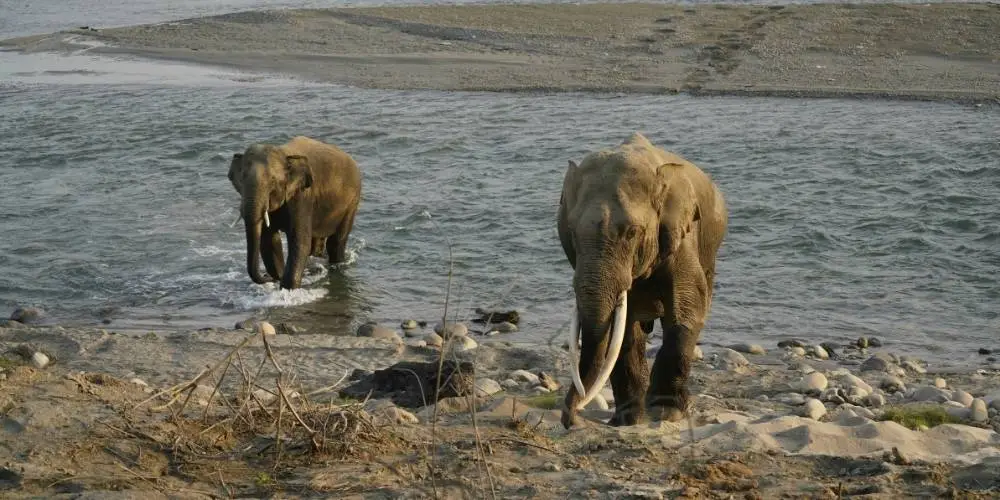
What sets Jim Corbett apart is its commitment to both conservation and immersive tourism. It was here that Project Tiger was launched in 1973, reinforcing the park’s global status as the guardian of India’s national animal. Take a wildlife safari to experience the magnificence of the jungles in its absolute raw glory and feel the thrill of spotting a tiger in its natural habitat.
Delhi to Jim Corbett: A Journey into the Wild
The drive from Delhi to Jim Corbett is about 250 kilometers and takes about 5 to 6 hours by car. It is a seamless journey via well-maintained highways, cutting through the plains of Uttar Pradesh before reaching, surrounded by hills, gateway town of Ramnagar. This ease of accessibility makes Jim Corbett a favourite place for quick weekend breaks as well as longer staycations.
Ramnagar is well-connected by train (the Ranikhet Express and Corbett Link Express are popular options from Delhi) and also has regular government and private buses playing from Delhi and other neighboring cities to Ramnagar or Jim Corbett. From Ramnagar, it’s a short drive to the various entry gates of the park.
Jim Corbett Safari: For the Adventurous Soul
A Jim Corbett Safari is at the very core of the Corbett experience. Jeep safaris and canter (open bus) safaris are the best way to venture into the park, with morning and evening slots offering very different atmospheres. The park is divided into unique tourism zones; Dhikala, Bijrani, Jhirna, Dhela, Durgadevi, and more; each promising distinct landscapes and spotting possibilities. Dhikala is the most sought-afier zone, famous for its grasslands, Sal trees, and vibrant wildlife encounters.
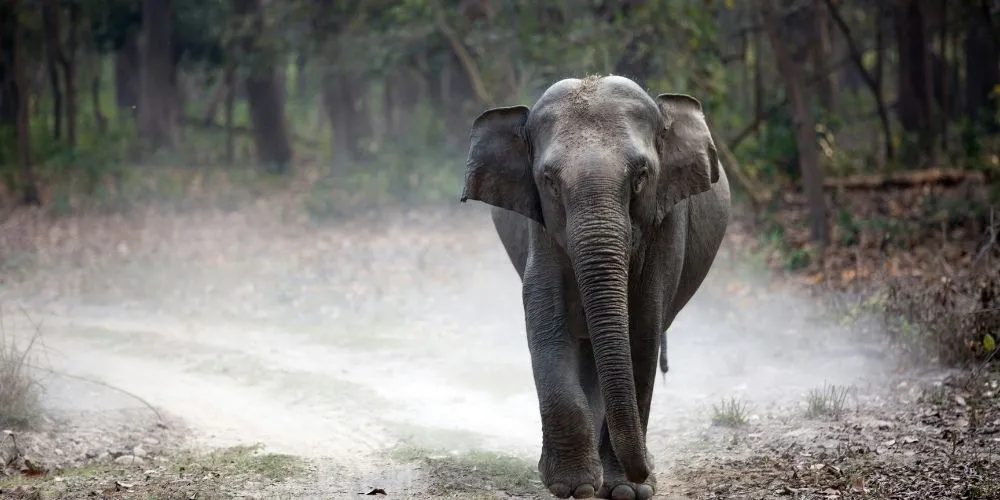
A safari in Corbett is more than just tiger spotting. You may come across herds of elephants ambling near waterholes, witness crocodiles basking on river banks, witness shiny brown deer gazing in the forest, or catch a glimpse as hornbills and kingfishers dart by. Expert guides interpret pugmarks and jungle calls, making every drive an education in the depths of the wild.
For bird lovers, Corbett is a haven; winter brings migratory species, and dawn echoes with dozens of trills. Nature walks, river crossing, and even elephant rides (in select zones) are also possible, especially in and around the buffer zones.
More Than a Tiger Park: Activities and Attractions
Jim Corbett isn’t just about safaris and spotting wildlife, it is also about:
- Trekking through the forest trails, especially in Sitabani Reserve Forest, which is open year-round.
- Visiting the Garjia Temple, Hanuman Dham and Sitabani Temple, three spiritual sites nestled amidst thick forest.
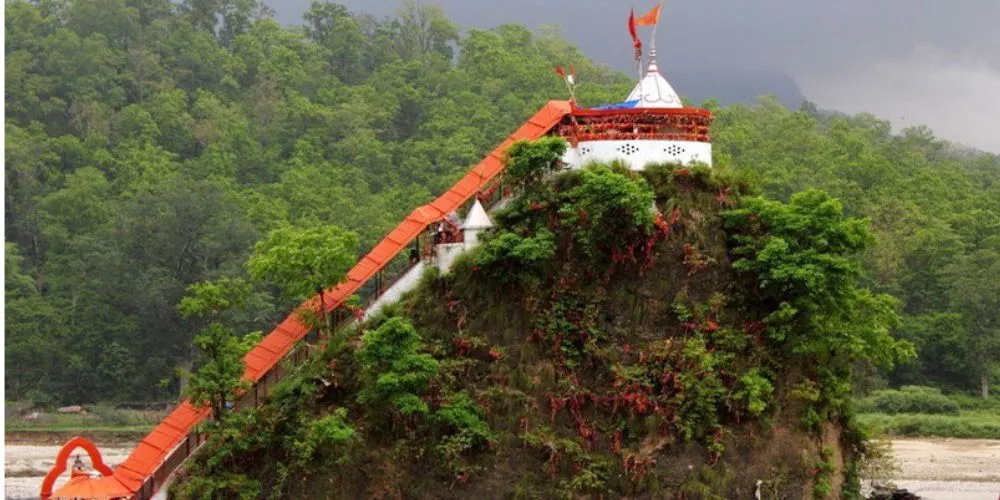
Image Source of Garjiya Temple @nainitalcorbetttourism
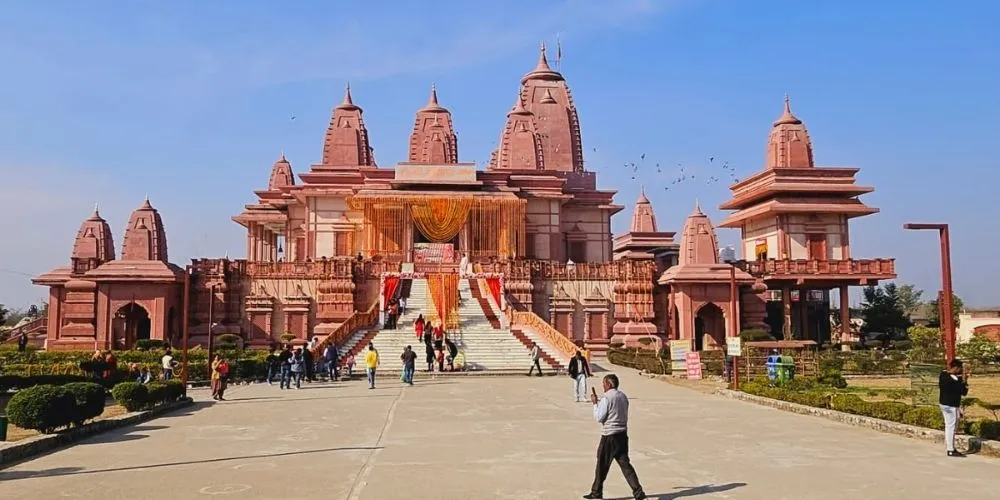
Hanuman Dham in Ram Nagar
- Enjoying a picnic at Corbett Waterfall, a scenic cascade alongside Sal trees.
- Exploring the Corbett Museum in Kaladhungi, the former home of Jim Corbett himself, packed with memorabilia and forest history.
- River rafiing on the Kosi and Ramganga rivers (during the monsoon), rock climbing, rappelling, and even mountain biking.
Resorts in Jim Corbett: Where the Wild Meets Luxury
Whether you’re seeking peaceful riverside to unwind by, forest-facing rooms, or a touch of eco-luxury that offers stunning sunrise and sunset skies, resorts in Jim Corbett spoil you for choice. From boutique river lodges and plush spa resorts to tented camps with bonfires and jungle sounds, every stay offers a slice of the wild.
Popular options include Aahana The Corbett Wilderness, Taj Corbett Resort & Spa, The Riverview Retreat, and Jim’s Jungle Retreat, all set amidst greenery and offering guided safaris, nature walks, and outdoor dining. Many resorts offer kid-friendly facilities, making them ideal for families, while couples can choose romantic hideaways where mornings begin with birdsong and mist over the river. For those who crave authenticity, forest rest houses inside zones like Dhikala offer rustic charm and the thrill of staying in the heart of big cat country (Note: advance bookings are a must to secure a spot).
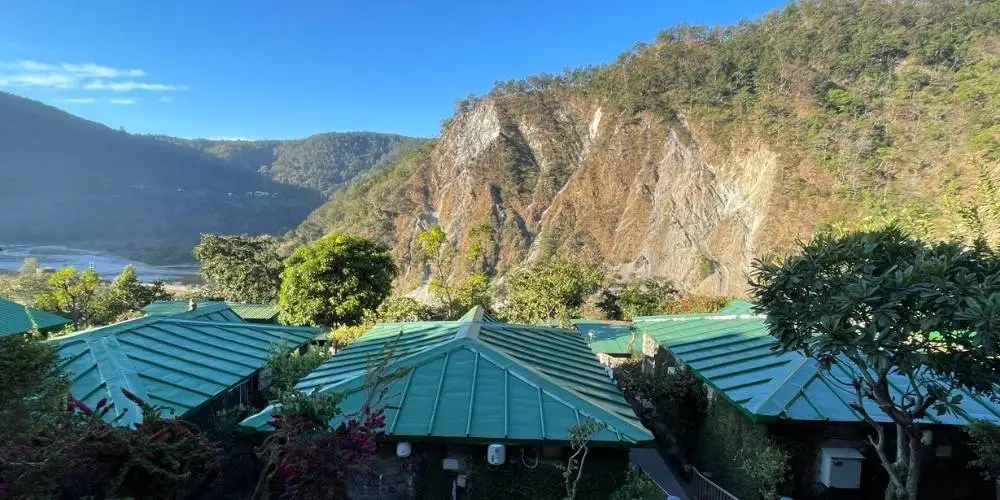
Food, Culture, and Local Touches
Dining in Jim Corbett is a delicious affair; resorts serve local Kumaoni cuisine alongside continental and Indian staples. Try Bhatt ki Churkani (black bean curry), Aloo Ke Gutke (spiced potatoes), and Singori (a sweet made with khoya and wrapped in Maalu leaf).
For unique souvenirs, pick up handwoven woolens from local markets or wooden handicrafis made by nearby artisans.
Jim Corbett makes an unforgettable getaway for friends, families, photographers, yogis, and everyone else. You can even go on a solo tour to unwind by a flowing river and seek solace in the views of the mountains.
What’s the Best Time to Visit?
Jim Corbett National Park is open from mid-November to June. The best wildlife sightings occur in the dry months (March to June), but winter (November to February) offers pleasant weather and excellent birdwatching. Monsoon (July-September) sees most zones closed, though the region turns magical and green. It is always best to plan ahead and if you are visiting during winters woolens should be kept handy at all times.
Final Thoughts
Jim Corbett is not just India’s oldest national park; it’s a living, breathing canvas of the wild; where legends, lush forests, and the silent shadows of tigers come alive. For every Indian traveller seeking a real jungle experience, a thrilling safari, and unbeatable resort stays, a journey from Delhi to Jim Corbett is the ultimate thrill; one that never fails to stir the soul, time and again.
By: Anushka Singhal
